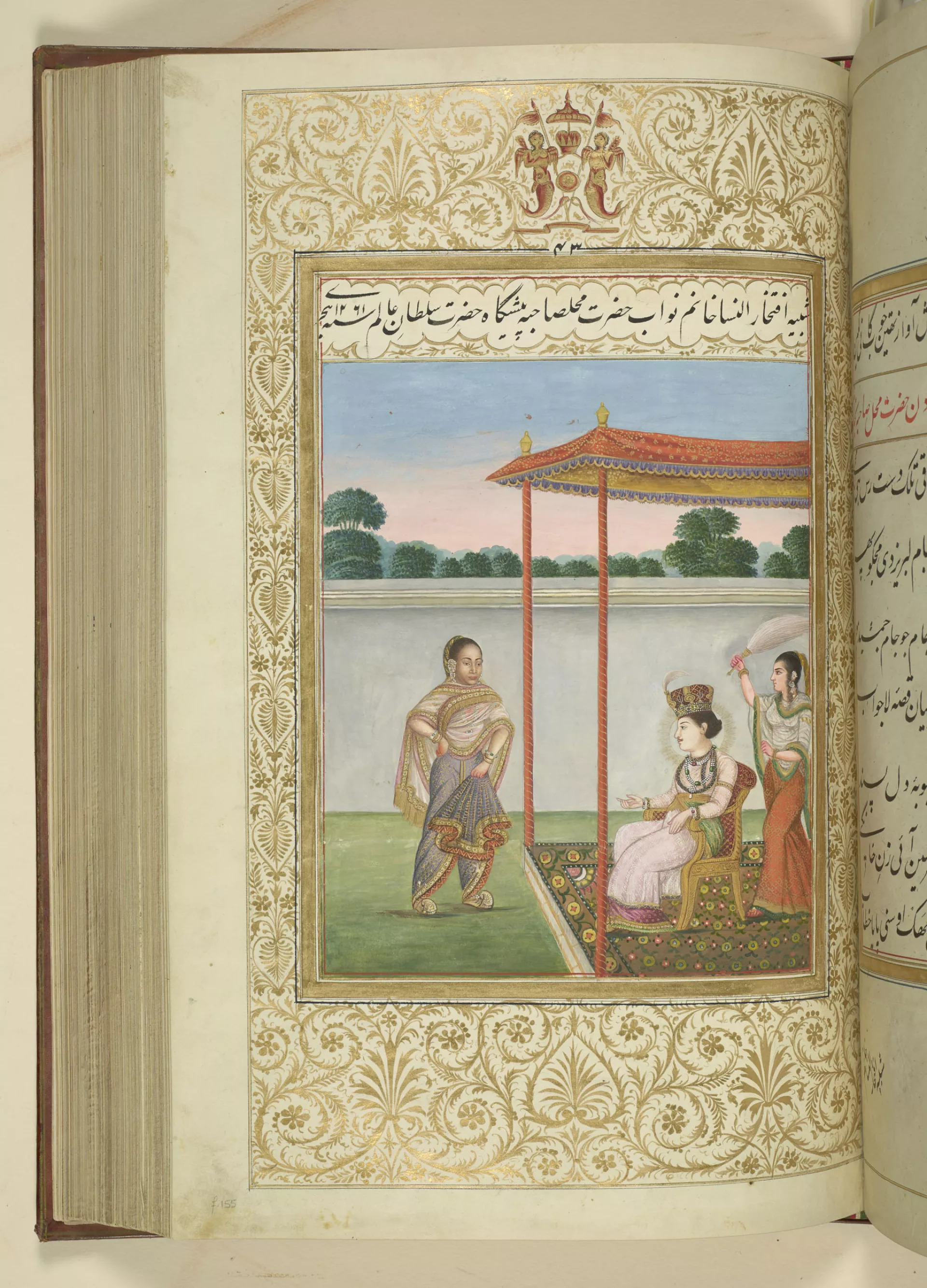
Eastern Encounters
Drawn from the Royal Library's collection of South Asian books and manuscripts
Wajid Ali Shah receives Hazrat Mahal
Lucknow, <i>c</i>.1849Fol. 155r from a manuscript of the Ishqnama (see cat. no. 77) | Painting in opaque watercolour including gold metallic paint with ink over traces of graphite on paper | 44.4 × 27.7 cm (folio); 22.8 × 18.6 cm (image) | RCIN 1005035
The lady in this painting standing proudly before the King, hand on hip and feet firmly on the ground, is his mut’ahi wife, Iftikar al-Nisa, known as Begum Hazrat Mahal. She was formerly a courtesan and her father had been one of the many African slaves of Wajid Ali Shah’s court. Today she is famous in South Asian history for her role in the Uprising of 1857 when she acted as regent for her 14-year-old son Birjis Qadir who was crowned as nominal leader of Awadh while his father, the deposed King, was temporarily interned in Fort William.[268] In December 1858 Hazrat Mahal issued an official response to Queen Victoria’s proclamation transferring powers from the East India Company to the Crown asking, ‘If the Queen has assumed the Government [of India] why does her Majesty not restore our Country to us, when our people wish it?’[269]
Hazrat Mahal’s downcast visage is certainly based on a photograph and is the only depiction of her in the Ishqnama.[270] Some say the King divorced her in 1850, around the time the manuscript was being completed, while others suggest he intentionally left her in Lucknow as a symbolic protector of his people. In a poem attributed to Wajid Ali Shah before the Uprising, he praises her ‘golden colour’ and ‘sophisticated demeanour’ before lamenting:
Calamity visits houses and families in the city
My markets were uprooted, Hazrat Mahal
You are the only means for comfort
You who shares the pain of the poor, Hazrat Mahal.[271]
[268] Llewellyn-Jones 2007, pp. 111–12.
[269] National Archives of India, Foreign Political Consultations, 31 December 1858, no. 3022, quoted in Llewellyn-Jones 2007, p. 29.
[270] A further identified portrait of Hazrat Mahal is a small drawing in the Birjis Qadir Album in the Chester Beatty Library Dublin (CBL MS 26 7.81).
[271] Quoted in Misra 1998, p. 111.








